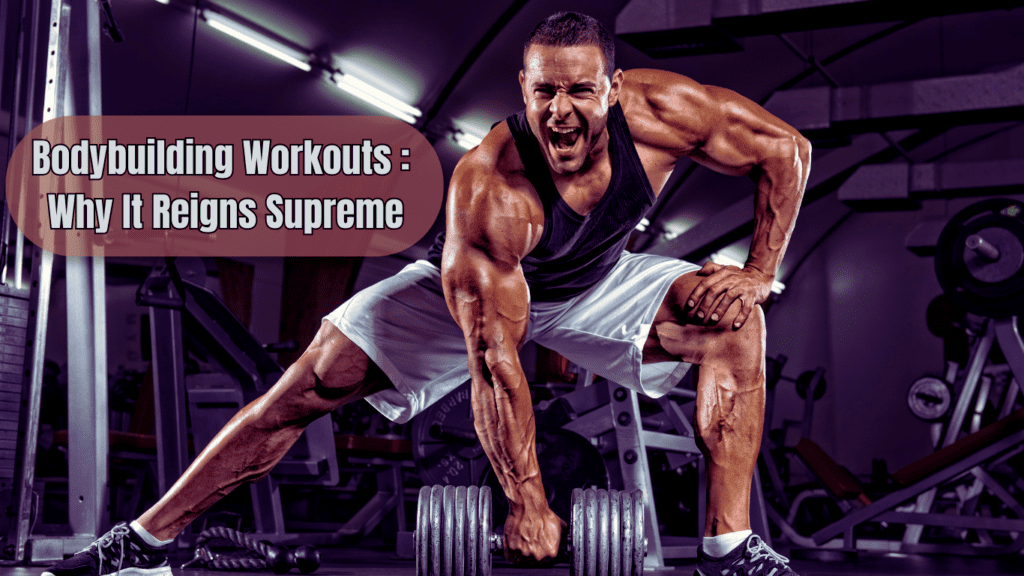Why an At Home Barre Workout is Perfect for Any Space and Schedule
In this article, we invite you to discover the transformative power of the at home barre workout, where you’ll learn essential exercises, expert tips, and how to design a customized routine that seamlessly fits into your lifestyle and helps you achieve your fitness goals.
Want a workout you can do anywhere, without needing fancy equipment? Enter barre—your ticket to sculpting long, lean muscles without leaving your living room. The beauty of an at home barre workout is that it offers you flexibility, making it ideal for anyone who wants to stay fit without investing in a lot of gear or rearranging the whole house. Whether you’re a fitness beginner or more advanced in your workouts, barre can meet your needs right at home.
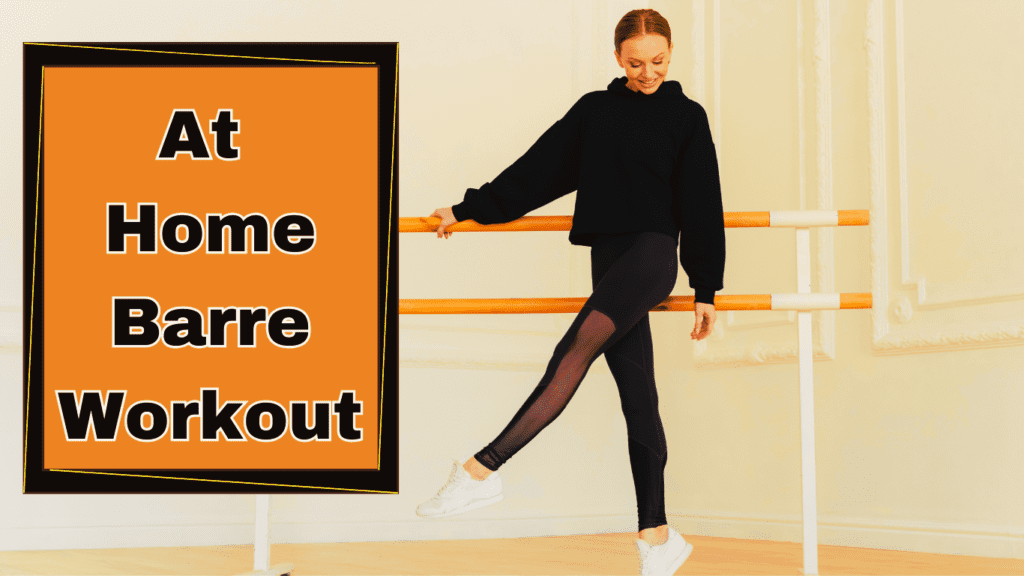
So, why exactly is an at home barre workout so perfect for home fitness? For starters, barre requires minimal space and equipment. You don’t need to clear out a room or invest in machines that take up space. All you need is a stable surface to support you—whether that’s the back of a chair, a countertop, or even a wall. This makes barre incredibly practical, especially if you live in a small apartment or don’t have a designated workout room. You can easily fit an at home barre workout into almost any space.
Barre workouts are inspired by ballet, but don’t worry—you don’t need any dance experience to benefit from them. The focus is on small, controlled movements that target specific muscle groups to improve strength, balance, and flexibility. This type of training helps build long, lean muscles, which is something many people love about barre. Plus, barre is low-impact, making it an excellent choice for those who need to be gentle on their joints but still want to get a full-body workout.
One of the most attractive aspects of an at home barre workout is how customizable it is. Unlike traditional workout plans that often prescribe a set number of minutes or reps, barre allows you to adjust based on your fitness level and the time you have available. Whether you’ve got 10 minutes or a full hour, barre can be adapted to fit your schedule. This makes it perfect for those days when life gets busy, but you still want to squeeze in some exercise. You can focus on different areas of the body—arms, legs, core, or a full-body routine—depending on your fitness goals.
Another key benefit is that barre improves posture and flexibility. Because the movements are small and controlled, they engage the muscles deeply, helping you become more aware of your body and how it moves. Over time, many people find that they stand taller, feel more balanced, and gain a greater range of motion. These benefits are especially valuable for people who spend long hours sitting, whether at a desk or in a car, and want to counteract some of the negative effects of a sedentary lifestyle.
Subscribe And Get Our Free E-Book:Unlocking The Power Of Nutrition-Supplements, Substitutes, and Superfoods!
In addition, barre is a workout that grows with you. If you’re just starting out, you can modify the movements to suit your abilities. As you become stronger and more confident, you can increase the intensity by adding light weights, resistance bands, or simply holding the poses for longer periods of time. The adaptability of an at home barre workout means it can continue to challenge you as you progress in your fitness journey.
For those who like variety, barre is a workout that never gets boring. There are so many different movements and routines you can explore, and you can easily find online videos or apps that guide you through a variety of workouts. Whether you want to focus on your core, tone your arms, or strengthen your legs, there’s a barre routine for that. This flexibility keeps your workouts fresh and engaging, which is crucial for staying motivated in the long run.
In this guide, we’ll show you how to get started with your own at home barre workout and offer tips for creating a routine that works for your body and schedule. Whether you’re new to fitness or looking to mix up your current routine, barre is a fantastic option for getting a balanced, effective workout at home.
What is Barre?
Barre is a ballet-inspired workout that blends elements of Pilates, yoga, and strength training, making it both versatile and effective. It may sound fancy, but an at home barre workout is really about using small, controlled movements to target specific muscle groups. You don’t need to be a dancer to enjoy or benefit from barre. Instead, you’ll find it a great way to tone and strengthen your entire body, no matter your fitness level. The beauty of this workout lies in its simplicity and the focus it places on precision.
At its core, barre is designed to work your legs, glutes, core, and upper body, while also improving flexibility and mobility. An at home barre workout allows you to engage all these areas without needing much equipment or space, which is part of what makes it such an accessible and efficient full-body workout.
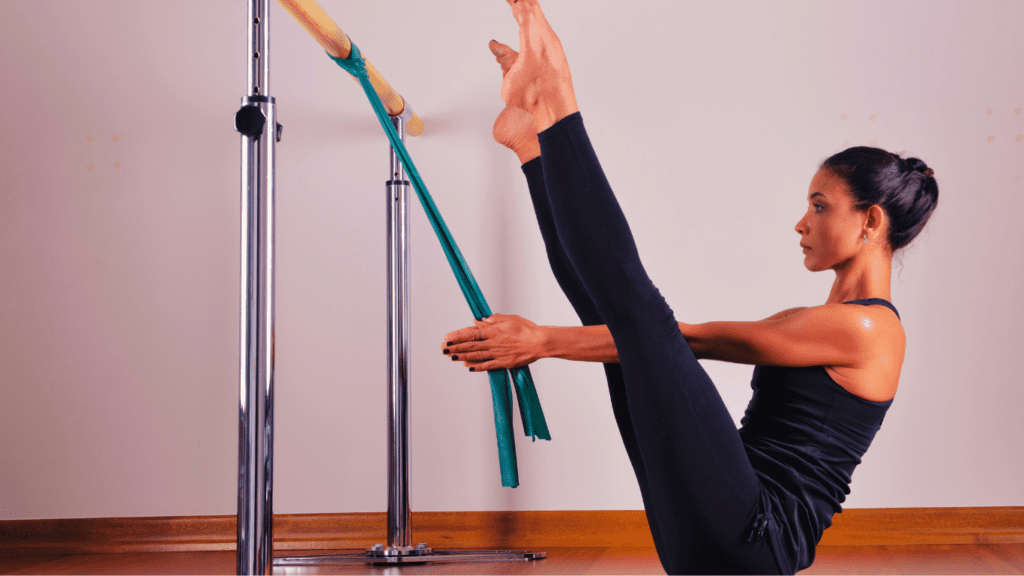
One of the main components of barre is its focus on lower body exercises, especially targeting your legs and glutes. Barre exercises typically use a mix of small pulses, holds, and stretching to really activate these muscle groups. You’ll often find yourself working in a bent-knee position, similar to a ballet plié, which deeply engages your thighs, hamstrings, and calves. These movements are designed to build endurance and strength in the lower body, creating lean, toned muscles over time. Even without weights, the repetitive nature of barre exercises can make your legs feel like they’re on fire—in the best possible way!
Moving on to the core, barre is well-known for its ability to strengthen and tone the muscles of the abs and back. The key here is how the workout isolates these muscle groups using small, deliberate movements that keep them engaged for longer periods of time. Many barre exercises require balance and stability, which forces your core to work continuously to keep you aligned. Whether you’re performing a plank, doing small crunches, or simply holding your body in a stable position, your core is constantly activated. This makes an at home barre workout highly effective for improving core strength and stability, both of which are crucial for overall fitness and everyday movement.
Upper body exercises in barre focus on the arms, shoulders, and chest. Typically, you’ll use light weights—sometimes just 1-3 pounds—during these movements, but don’t let the low weight fool you. Barre workouts emphasize high repetitions and small, controlled movements, which can make even a small weight feel challenging over time. Many at home barre workouts incorporate exercises like bicep curls, tricep dips, and shoulder raises to tone and strengthen the upper body. Even without weights, using your own body resistance can help you develop lean muscle in your arms and shoulders.
Flexibility is another important component of barre, and it’s often woven throughout the workout. Stretching and mobility exercises are crucial not only for improving your flexibility but also for preventing injury and keeping your muscles healthy. In barre, stretches are typically performed after each set of strengthening exercises. This method, sometimes called “dynamic stretching,” helps release tension from the muscles while increasing their range of motion. By improving flexibility, you’ll notice that your body feels less tight and more fluid, which can be especially beneficial if you spend a lot of time sitting or working at a desk.
Incorporating flexibility into an at home barre workout also means you’re giving your muscles a chance to recover between more intense exercises, allowing you to maintain proper form and avoid burnout. Over time, regular stretching can lead to better posture, improved circulation, and greater ease of movement in your daily life.
Overall, the combination of strengthening, toning, and stretching makes barre a well-rounded and highly effective workout. The small, controlled movements allow for a deeper focus on each muscle group, helping you develop strength and flexibility simultaneously. Whether you’re working your legs, core, or arms, an at home barre workout provides a full-body approach that can be adapted to fit your fitness level and goals.
Why Choose Barre for Your At-Home Workout?
Choosing an at home barre workout comes with numerous benefits that make it a smart option for staying fit without the hassle of complex equipment or lengthy workout sessions. Here’s why barre stands out as an ideal at-home workout:
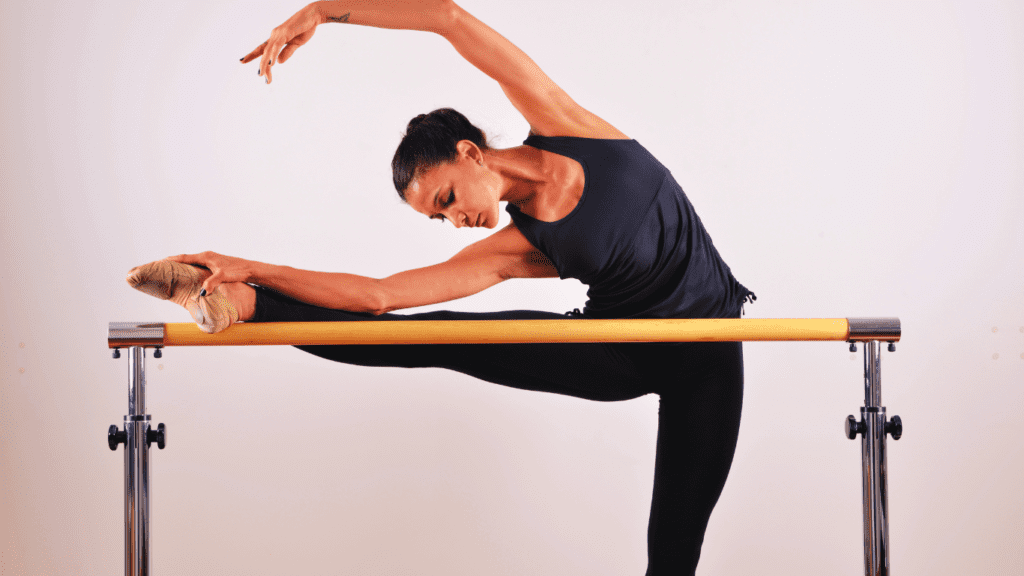
Minimal Equipment, Maximum Results
One of the best things about an at home barre workout is how little equipment you need to get started. You won’t have to invest in expensive machines or find extra storage for bulky gym gear. Instead, you can set up a barre workout with just a few basic items:
- Chair or Countertop: Your main “barre” is simply something sturdy for support—like a chair, countertop, or table.
- Optional Equipment: To enhance the workout, you can use light weights (1-3 lbs.), a resistance band, or a yoga mat.
This simplicity allows you to start your workout quickly and focus on the exercises themselves rather than complicated equipment setup.
Total-Body Workout
An at home barre workout offers a total-body workout, blending different fitness elements into one effective routine. Here’s what barre delivers:
- Muscle Toning: Strengthen and tone key muscle groups like your legs, glutes, arms, and core.
- Balance Work: Barre exercises often require maintaining balance, which helps develop stability.
- Flexibility: Each session includes stretching to improve flexibility and mobility.
- Optional Cardio: You can even incorporate cardio into your routine, depending on the intensity you choose.
This combination makes barre an efficient, well-rounded workout, engaging multiple muscle groups at once.
Low Impact but Challenging
Barre is low-impact, meaning it’s gentle on your joints, making it suitable for people of all ages or those recovering from injuries. However, don’t be deceived by its gentle appearance—it’s still a challenge! Those small, controlled movements engage your muscles in a way that builds strength over time. Here’s what you can expect:
- Joint-Friendly: Low-impact means it’s a safer option for your knees and hips.
- Deep Muscle Engagement: Tiny pulses and holds might look easy, but they create a serious burn, especially in your legs, glutes, and core.
This makes an at home barre workout perfect for anyone looking to tone up while avoiding high-impact exercises like running or jumping.
No Time Constraints
An at home barre workout is highly flexible in terms of time. Unlike traditional workouts that demand a set 45- or 60-minute session, barre adapts to your schedule, making it perfect for busy lifestyles.
- Short on Time? You can still get a full-body workout in just 10-15 minutes by focusing on key areas.
- Have More Time? If you have 30-60 minutes, you can enjoy a longer, more intense session.
This makes barre an excellent choice for those with packed schedules who still want to maintain a consistent fitness routine. The ability to adjust the length of the workout means you can stay active even on the busiest days.
Scalable to Your Fitness Level
Barre is not just for beginners or advanced athletes—it’s adaptable for everyone. Whether you’re just starting out or have been working out for years, an at home barre workout can be tailored to meet your needs:
- For Beginners: Use smaller ranges of motion or lighter weights, and follow modified versions of the exercises.
- For Advanced: Increase the intensity by adding resistance bands, heavier weights, or holding positions for longer.
This flexibility allows barre to grow with you as you become stronger and more confident.
Benefits & Features of At-Home Barre Workouts Chart:
| Feature/Benefit | Description | How It Enhances Fitness |
|---|---|---|
| Minimal Equipment | Requires only a stable surface (chair, countertop, wall). Optional: light weights, resistance bands. | No bulky gear—ideal for small spaces and convenience. |
| Space Efficiency | Can be done in small spaces, no need for a dedicated workout room. | Perfect for apartments or homes with limited space. |
| Low Impact | Gentle on joints, suitable for all ages and injury recovery. | Full-body workout without stressing knees, hips, or back. |
| Flexible Duration | Adjustable workout time (10 minutes to 60 minutes). | Fits any schedule—work out as little or as much as you want. |
| Posture & Flexibility | Improves posture, balance, and range of motion. | Reduces effects of sedentary lifestyle and enhances body awareness. |
| Muscle Toning | Targets legs, glutes, core, and arms with controlled movements. | Builds lean muscle with high reps and small pulses. |
| Scalable | Adjust intensity to match fitness level (beginner to advanced). | Grows with you as you progress in strength and endurance. |
| Variety | Numerous routines for different body areas. | Keeps workouts fresh, preventing boredom and plateaus. |
| Accessibility | No dance experience needed—focus on small, controlled movements. | Simple, effective for anyone, regardless of experience. |
In summary, an at home barre workout provides a unique blend of simplicity and effectiveness, making it an ideal choice for anyone looking to stay fit at home. With minimal equipment, a total-body focus, low-impact moves, and no strict time commitments, it’s a workout that easily fits into your life, no matter your schedule or fitness level. Whether you’re aiming to tone, strengthen, or improve your flexibility, barre has something to offer for everyone—right from the comfort of your own home.
Barre Exercises You Can Do at Home
An at home barre workout is made up of simple, ballet-inspired movements that target different muscle groups. Below, we’ll walk through key exercises for your lower body, core, upper body, and flexibility, along with tips on how to incorporate them into your workout based on your fitness level and available time.
Lower Body (Legs and Glutes)
In barre, lower body exercises are designed to tone and strengthen your legs, thighs, and glutes while also improving flexibility. Here are some foundational moves:
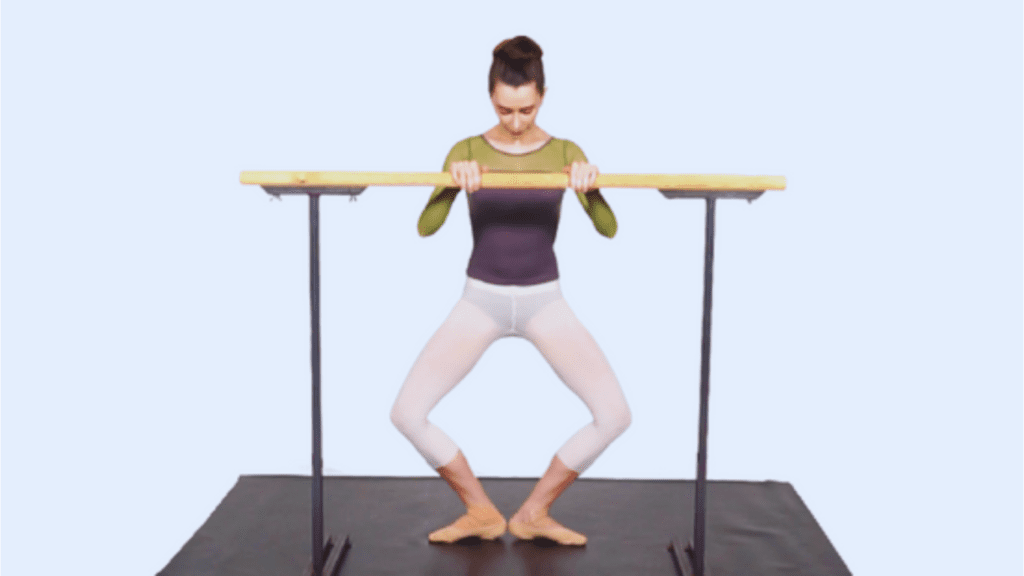
- Plies (pronounced plee-ay):
- How to do it: Stand with feet slightly wider than hip-width apart, toes turned outward. Lower your hips as if sliding down a wall, keeping your back straight and core engaged.
- Benefits: Tones your thighs, glutes, and inner thighs while increasing flexibility in the hips.
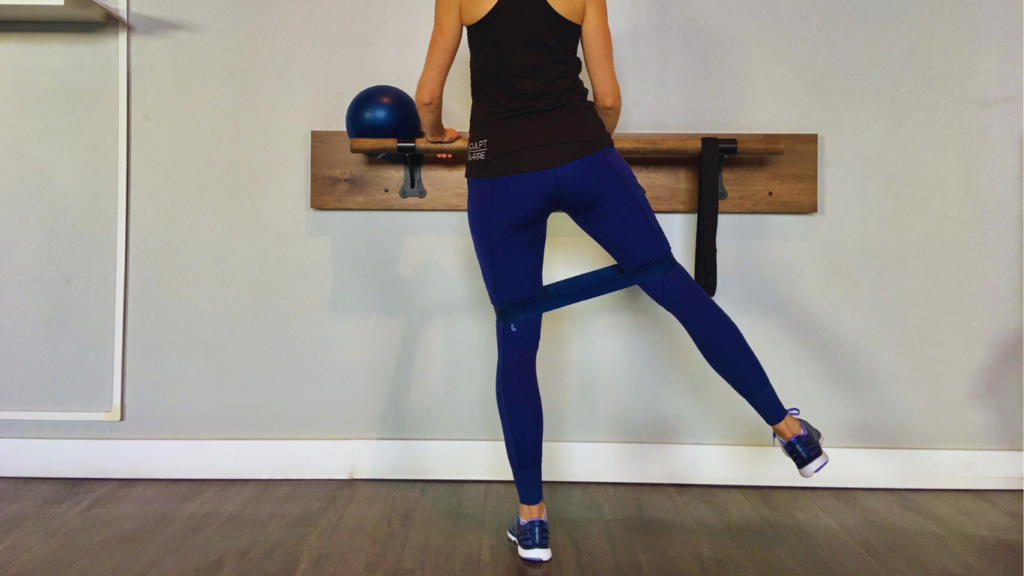
- Leg Lifts (Back and Side):
- How to do it: Hold onto a chair or counter for balance. Lift one leg straight behind you or out to the side. Pulse it up and down slightly.
- Benefits: Helps tone the glutes, outer thighs, and strengthens the lower back.
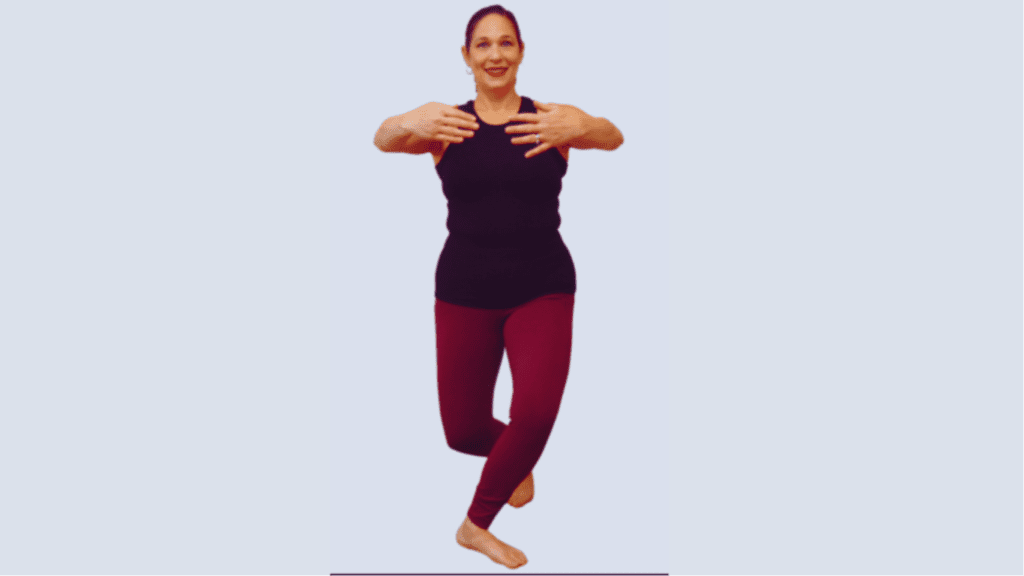
- Curtsy Lunges:
- How to do it: Step one foot behind you into a diagonal lunge, keeping your front knee aligned with your ankle. Alternate sides.
- Benefits: Targets the inner and outer thighs, strengthens the glutes, and improves balance by engaging the core.
Core (Abs and Back)
Core exercises in an at home barre workout are focused on strengthening the abs, back, and improving overall stability. These movements are highly effective at building a strong, supportive core.
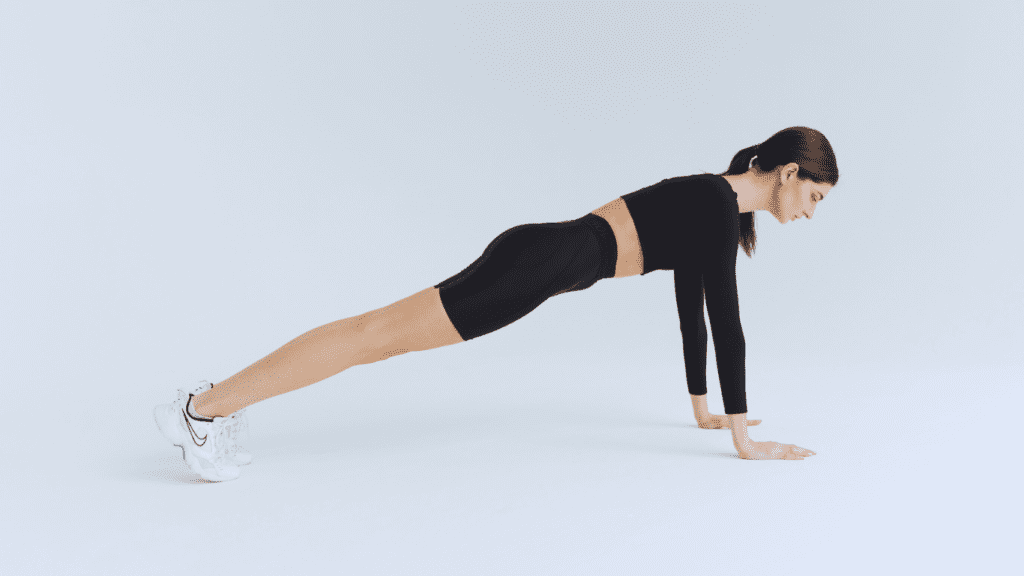
- Plank:
- How to do it: Place your hands on the floor or modify by placing them on a countertop. Hold your body in a straight line from head to heels, engaging your core throughout.
- Benefits: Strengthens the entire core, shoulders, and legs, while promoting balance and posture.
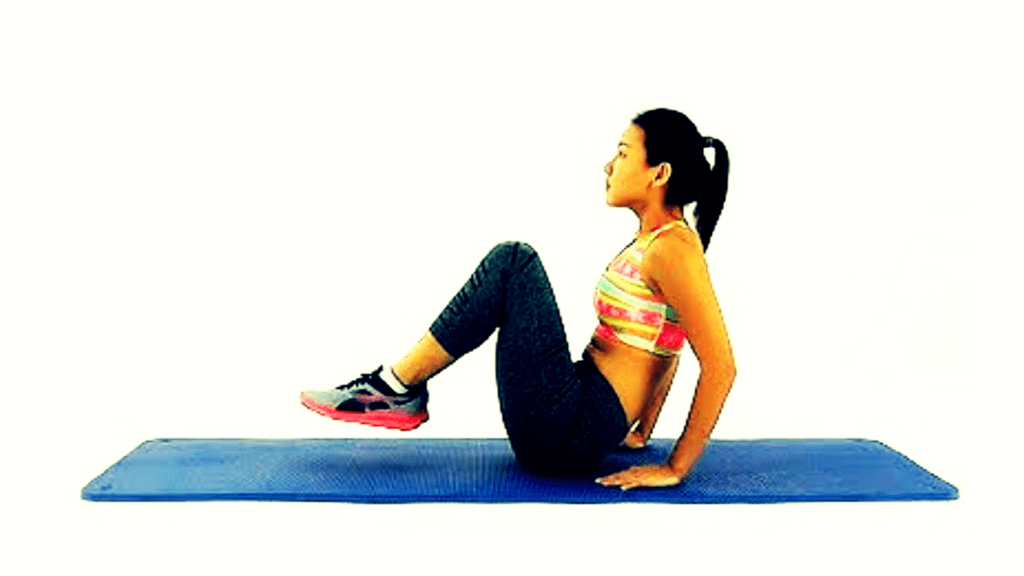
- Seated Tucks:
- How to do it: Sit on the floor or mat, leaning back slightly. Bring your knees toward your chest and pull your abs in tighter with each tiny “tuck” movement.
- Benefits: Targets the lower abs and helps improve core stability and strength over time.
Upper Body (Arms and Shoulders)
Even without heavy weights, barre incorporates upper body exercises that effectively tone the arms and shoulders using light resistance and high repetitions.
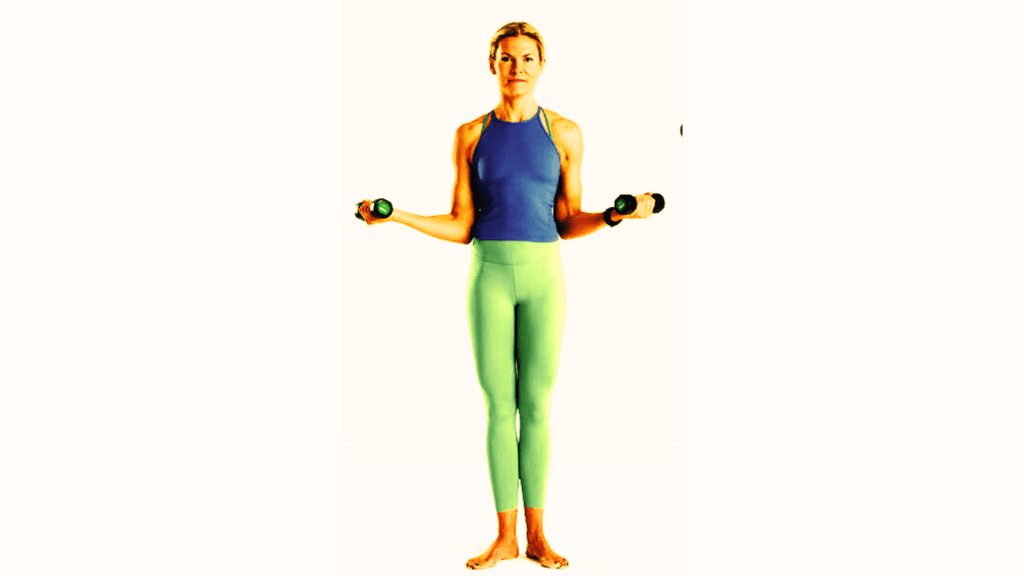
- Bicep Curls with Light Weights or Resistance Band:
- How to do it: Stand tall with elbows close to your sides. Curl the light dumbbells or resistance band upward, squeezing your biceps at the top of the movement.
- Benefits: Tones the front of your arms without adding bulk, creating lean muscle definition.
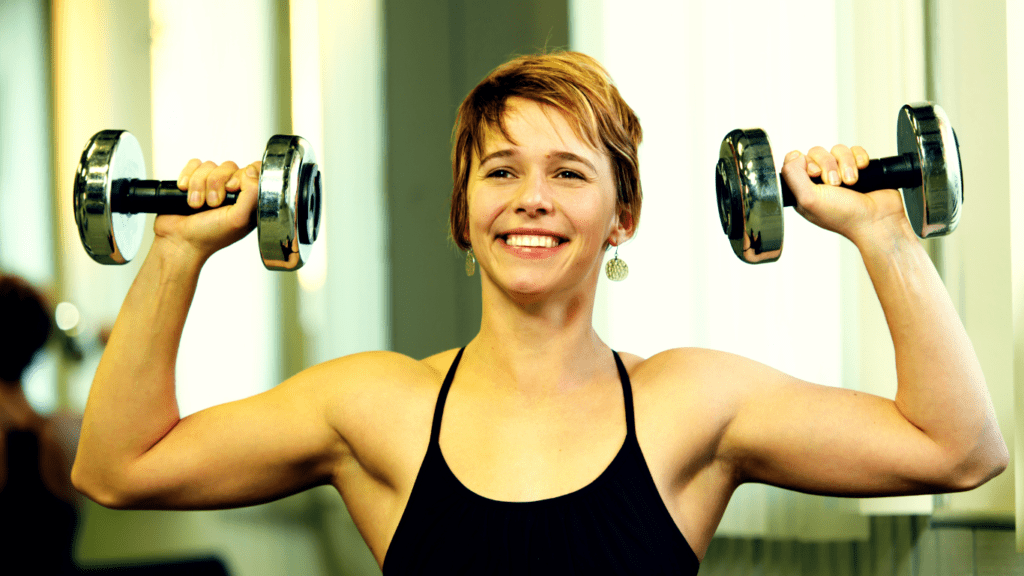
- Overhead Press:
- How to do it: Press light weights or resistance bands upward from shoulder height to above your head.
- Benefits: Strengthens the shoulders and upper arms, improving both strength and endurance in these muscle groups.
Flexibility (Stretching and Mobility)
Stretching is an important part of every at home barre workout, as it helps improve flexibility and mobility while reducing the risk of injury. Here are two key stretches:
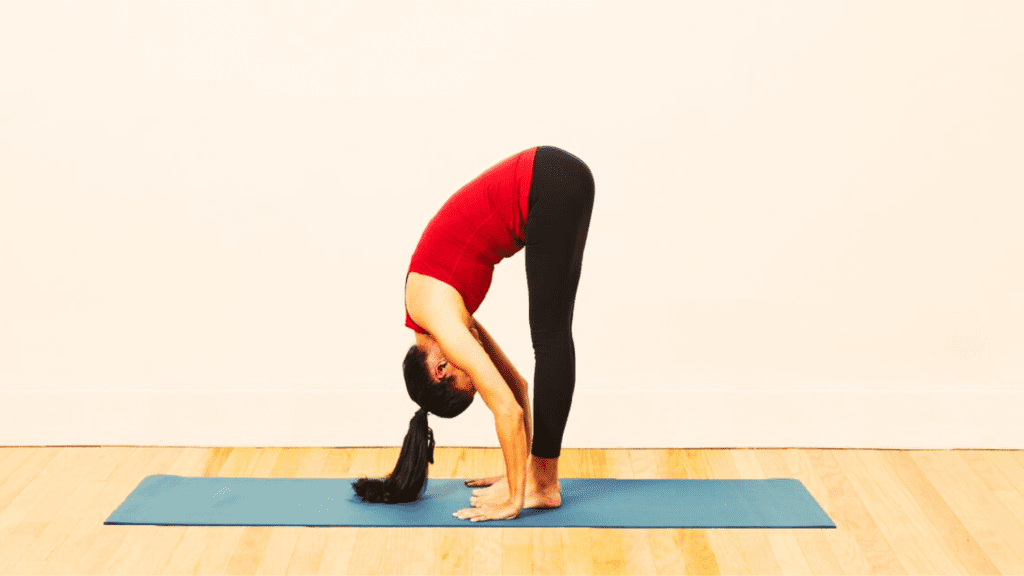
- Forward Fold (Hamstring Stretch):
- How to do it: Stand tall and slowly bend forward at the hips, reaching toward your toes while keeping your back straight.
- Benefits: Stretches the hamstrings and lower back, improving flexibility and relieving tension in these areas.
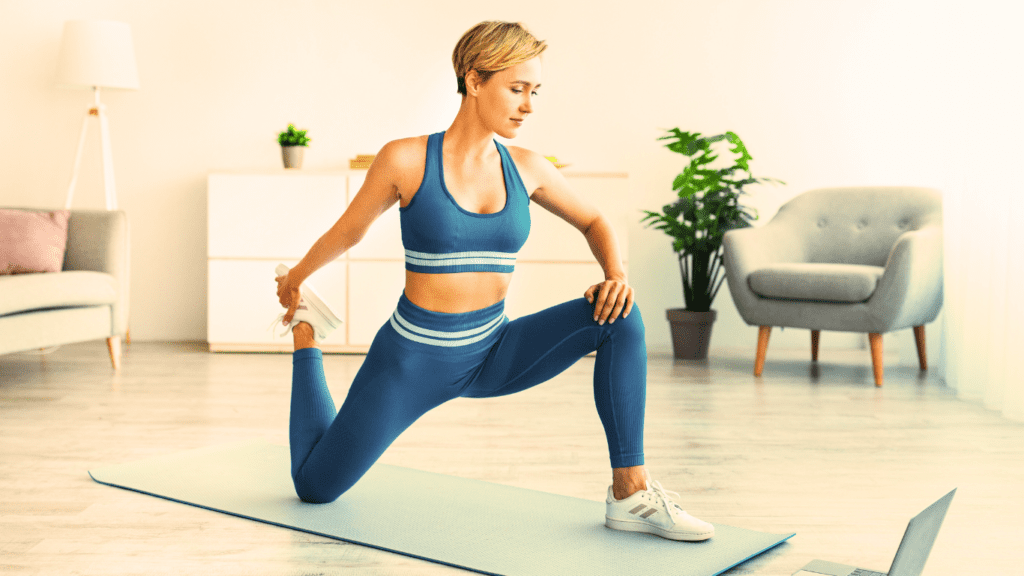
- Hip Flexor Stretch:
- How to do it: Step one foot forward into a low lunge position, with the other knee on the floor. Gently press your hips forward to feel the stretch in your hip flexors.
- Benefits: Opens up tight hips and stretches the quadriceps, which is particularly beneficial if you spend a lot of time sitting.
How to Combine These Exercises
The beauty of an at home barre workout is that you can adjust it based on your time and fitness level. Whether you have just 10 minutes or a full hour, you can still get an effective workout.
- Short on Time? Choose one exercise from each section (lower body, core, upper body, and flexibility) and perform each for 1-2 minutes. This creates a balanced workout in as little as 10-15 minutes.
- Want a Full Workout? Perform 3-4 sets of each exercise, holding and pulsing for 15-30 seconds, followed by a quick stretch in between sets. This can easily fill a 30-60 minute session.
Whether you’re a beginner or more advanced, you can customize the intensity by adjusting the depth of each movement, adding light weights or resistance bands, or increasing the number of repetitions. The more you challenge yourself, the more progress you’ll see over time.
Incorporating these simple yet highly effective barre exercises into your routine makes an at home barre workout not only convenient but also versatile and customizable. You don’t need a lot of time or equipment to work on your lower body, core, upper body, and flexibility. Barre’s focus on small, controlled movements means that even a short workout can yield significant results, making it the perfect addition to your home fitness routine.
35 Min Full Body Barre Video
How to Build Your Own At-Home Barre Workout
Now that you’re familiar with the essential barre exercises, it’s time to build an at home barre workout that fits your personal goals, schedule, and fitness level. Think of barre like a flexible workout menu—you can mix and match exercises to suit your time, energy, and preferences. Whether you want a quick 10-minute session or a longer, more challenging routine, this guide will help you design the perfect workout.
Step 1: Choose Your Focus
The first step in creating your at home barre workout is deciding what you want to focus on. Here are some options:
- Full-Body Workout: This is the most balanced approach, where you include exercises from all four areas—lower body, core, upper body, and flexibility. It’s great for an all-around strength and toning session.
- Legs and Glutes Day: If you want to focus on your lower body, center your workout on movements like plies, leg lifts, and curtsy lunges. These exercises target your thighs, glutes, and hips for that lean, toned look.
- Core and Flexibility: If your goal is to strengthen your abs and back while also improving flexibility, dedicate more time to planks, seated tucks, and stretching exercises like forward folds and hip flexor stretches. This combination will help you build a strong core and keep your muscles limber.
Step 2: Set Your Time
The beauty of an at home barre workout is that it can fit into any schedule, whether you have a few minutes or a full hour. Here’s how to structure your workout based on the time you have available:
- Short and Sweet (10-15 Minutes): If you’re short on time but still want to get a good workout in, pick one or two exercises from each section (lower body, core, upper body, and flexibility). Perform 2-3 sets of each exercise with short rest periods. This approach keeps your heart rate up and works multiple muscle groups without taking much time.
- Balanced Routine (20-30 Minutes): For a more balanced session, select 2-3 exercises from each section. Perform 3-4 sets of each exercise, focusing on proper form and control. This will give you a solid mix of strength, flexibility, and toning in under 30 minutes.
- Longer, More Intense (40+ Minutes): If you’re looking for a challenge, aim for a longer workout. Go through all the exercises, doing 4-5 sets of each with short rest intervals. Add extra pulses, holds, or resistance to intensify the movements. This option is great for those days when you have more time and want to push yourself harder.
Step 3: Listen to Your Body
A key part of any successful at home barre workout is paying attention to your body’s signals. Here’s how to adjust your workout based on your fitness level:
- Beginners: If you’re just starting out, focus on learning the movements and getting your form right. Start with fewer repetitions and sets, and don’t hesitate to take breaks when needed. It’s important to build a strong foundation before increasing the intensity of your workout.
- Intermediate/Advanced: Once you’re comfortable with the basic movements, you can step up the challenge. Add pulses to your exercises (for example, pulsing at the bottom of a plie) or hold the positions for longer (like holding a plank for an extra 10 seconds). You can also increase the number of repetitions or add light weights or resistance bands for more resistance.
Step 4: Progress Over Time
As with any fitness routine, consistency is key in an at home barre workout. The more you practice, the stronger and more flexible you’ll become. Over time, you’ll want to progress your routine to keep challenging your body and avoiding plateaus. Here are some ways to step up your workout:
- Add More Repetitions: As your endurance builds, increase the number of repetitions for each exercise. This will help you push your muscles to the next level and enhance muscle tone.
- Increase Resistance: Another great way to intensify your workout is by adding resistance bands or light weights (1-3 lbs.) to your routine. This will challenge your muscles in new ways and keep you progressing.
- Try Advanced Movements: If you’ve been working out consistently and feel ready for more, consider incorporating advanced barre moves like small jumps or extra pulses at the end of each movement. These tweaks will help you keep improving and achieving your fitness goals.
Chart: How to Customize Your At-Home Barre Workout
| Factor | Beginner | Intermediate | Advanced |
|---|---|---|---|
| Time Commitment | 10-15 minutes | 20-30 minutes | 30-60 minutes |
| Intensity | Low (Focus on learning form, smaller movements) | Moderate (Increase range of motion, add light weights) | High (Add resistance bands, heavier weights, hold longer) |
| Focus Areas | Full-body (Basic exercises to target arms, legs, core) | Target specific muscle groups (legs or core) | Intense targeting of multiple muscle groups (arms, legs, core) |
| Equipment Needed | Chair, countertop (optional: yoga mat) | Chair, light weights (1-3 lbs) | Chair, resistance bands, light weights (1-3 lbs), yoga mat |
| Muscle Focus | Basic toning (low reps, small pulses) | Muscle toning with higher repetitions (add variety) | Strength and endurance (longer holds, heavier resistance) |
| Flexibility | Stretching after each set | Dynamic stretching throughout workout | Increased range of motion, dynamic flexibility routines |
| Core Engagement | Core activated during stability exercises | Focus on engaging the core with more challenging poses | Intense core work, plank variations, extended holds |
| Posture Benefits | Focus on awareness, basic alignment | Focus on improving posture and balance | Advanced posture correction, dynamic stability work |
Building your own at home barre workout is simple and flexible, allowing you to tailor it to your goals, time, and fitness level. By selecting a focus (whether it’s full-body, lower body, or core), setting a workout length, and listening to your body’s needs, you can create a routine that’s effective and enjoyable. As you progress, continue to challenge yourself with additional repetitions, resistance, and more advanced moves to keep your workouts fresh and impactful. With consistency and the right structure, an at home barre workout can help you achieve great results from the comfort of your home.
Tips for Success
Creating a successful at home barre workout is about more than just doing the exercises; it’s about consistency, proper form, and making the most of what you have. Whether you’re new to barre or have some experience, these tips will help you get the most out of your workouts. Remember, barre is all about small, controlled movements, and the way you approach your workout can make a big difference in the results you see.
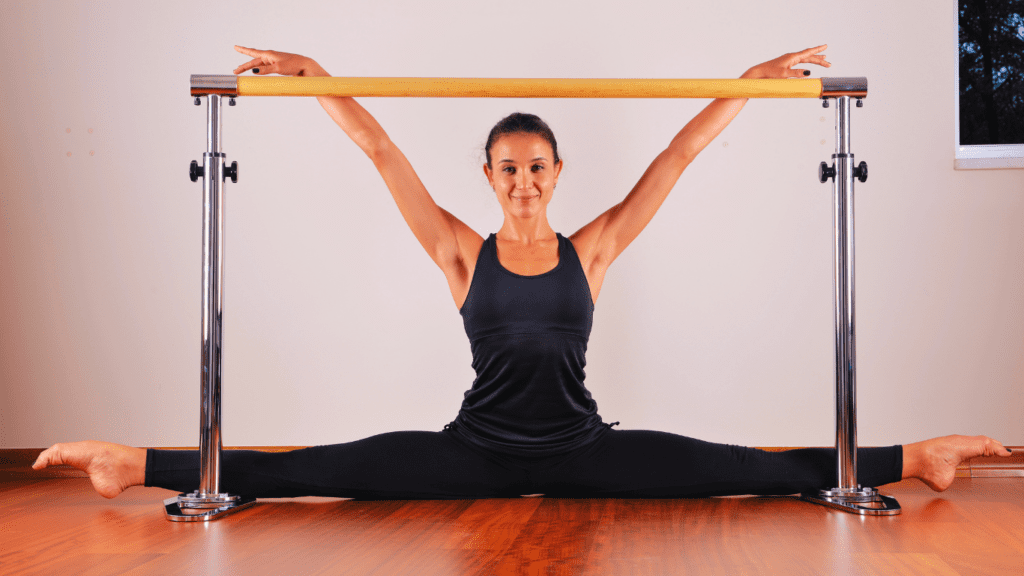
Use What You Have
One of the greatest advantages of an at home barre workout is that you don’t need any fancy equipment. While traditional barre workouts use a ballet barre, you can easily replace it with things you already have at home. A chair, countertop, or any sturdy piece of furniture will work perfectly for support. The idea is to have something that allows you to balance while you focus on your movements, so don’t feel the need to invest in specialized equipment unless you want to.
If you want to add a bit more resistance to your workout, consider using light hand weights (1-3 lbs.), a resistance band, or even household items like water bottles as substitutes. A yoga mat can also be useful for floor-based exercises and stretches, but it’s not required to get an effective workout. The key is to make your at home barre workout convenient, without feeling pressured to buy new things.
Focus on Form
When it comes to barre, how you perform the movements is far more important than how fast you complete them. In fact, the slower and more controlled your movements, the more effective your at home barre workout will be. It’s all about form—engaging the right muscles and maintaining control throughout each exercise.
For example, when you’re doing a plie or leg lift, focus on keeping your core engaged, maintaining good posture, and ensuring that your movements are precise. These small, deliberate motions will target your muscles more effectively, helping you get the toning benefits that barre is known for. In other words, quality beats quantity in barre, so don’t rush through your exercises.
Consistency is Key
To see noticeable results from your at home barre workout, consistency is essential. Ideally, you want to aim for barre sessions 3-4 times a week. But keep in mind, you don’t need to spend an hour each time. Even if you only have 10 or 15 minutes to spare, those short sessions still count. What’s most important is that you’re showing up regularly and keeping your body moving.
Barre’s versatility allows you to adjust the workout based on your available time. So, if you have a busy week, a quick session with a few core exercises can be just as beneficial as a longer workout on another day. Consistency will help build strength and flexibility over time, and eventually, you’ll notice the difference in how your body feels and moves.
Combine with Other Workouts
While an at home barre workout offers a fantastic way to tone muscles and improve flexibility, you can also combine it with other types of workouts for a more well-rounded fitness routine. If you enjoy cardio or strength training, feel free to alternate between barre and those activities during the week.
For example, you might do a cardio session one day and follow it up with barre the next. This way, you’re challenging your body in different ways—getting the heart-pumping benefits of cardio while still focusing on strength, balance, and flexibility with barre. Mixing it up not only keeps things interesting but also prevents burnout and helps improve your overall fitness.
In summary, the key to making your at home barre workout successful lies in simplicity and consistency. You don’t need special equipment or long workout sessions to see results. Use what you have around the house, focus on maintaining proper form with slow and controlled movements, and aim to make barre a regular part of your routine. Whether you combine it with other activities like cardio or stick to barre exclusively, this workout is adaptable and effective for all fitness levels.
Wrapping Up Your At Home Barre Workout Journey
As we wrap up this comprehensive guide on the at home barre workout, it’s important to reflect on the key elements that will help you successfully incorporate barre into your fitness routine. Understanding these fundamentals will empower you to create your own barre workouts tailored to your unique needs and goals.
Key Points Summary
- Use What You Have: You don’t need a traditional ballet barre. A chair, countertop, or sturdy furniture can serve as support, making barre accessible for everyone.
- Focus on Form: Control is crucial in barre. Slow, deliberate movements are more effective for targeting muscles than fast-paced exercises. This emphasis on form enhances the benefits of each movement.
- Consistency is Key: Aim for 3-4 barre sessions each week, even if they’re short. Consistent practice will lead to noticeable improvements in strength, flexibility, and overall fitness.
- Combine with Other Workouts: Feel free to mix barre with other activities such as cardio or strength training. This variety keeps your routine interesting and allows for comprehensive fitness benefits.
- Create Your Own Routine: Build your own at home barre workout by selecting exercises that align with your fitness goals and the time you have available. You can combine lower body, core, upper body, and flexibility exercises in ways that suit your schedule.
Now that you have the knowledge and tools, it’s time to take action! Don’t wait—try creating your own at home barre workout today. Remember, you can mix and match exercises based on your goals, whether you want a full-body workout, focus on specific areas, or simply get in a quick session. The beauty of barre is its flexibility and adaptability to your lifestyle.
Frequently Asked Questions (FAQ)
1. What is barre?
Barre is a ballet-inspired workout that combines elements of Pilates, yoga, and strength training. It focuses on small, controlled movements to target specific muscle groups for a full-body workout.
2. Do I need special equipment for an at-home barre workout?
No! You can use a chair, countertop, or sturdy furniture as your barre. Optional equipment includes light weights, resistance bands, or a yoga mat for added comfort during floor exercises.
3. How often should I do barre workouts?
For optimal results, aim for 3-4 barre sessions per week. Even shorter sessions of 10-15 minutes can be effective if you focus on quality movements.
4. Can barre workouts help with weight loss?
While barre is not primarily a cardio workout, it can help tone muscles and improve overall fitness. When combined with a balanced diet and cardio exercises, it can support weight loss goals.
5. Is barre suitable for beginners?
Absolutely! Barre workouts can be easily modified to suit all fitness levels. Start with simpler movements and gradually progress as you become more comfortable with the exercises.
6. How long does a typical barre workout last?
A barre workout can last anywhere from 10 minutes to an hour, depending on your schedule and goals. You can create shorter sessions for busy days and longer ones when you have more time.
7. What should I wear for an at-home barre workout?
Wear comfortable workout clothes that allow for a full range of motion. Many people prefer leggings or workout shorts with a fitted top. Make sure your footwear is suitable—some choose to do barre barefoot or with grip socks.
8. Can barre help improve flexibility?
Yes! Barre incorporates stretching and mobility exercises that enhance flexibility, particularly in the hips, legs, and back.
9. What are the benefits of focusing on form during barre workouts?
Focusing on form ensures you engage the correct muscles, preventing injuries and maximizing the effectiveness of each movement. It leads to better results and helps develop muscle memory.
10. How do I track my progress in barre workouts?
You can track your progress by noting how many repetitions and sets you can complete, how your body feels during and after workouts, and any improvements in strength, flexibility, and endurance over time.
By embracing the principles and practices shared in this guide, you’re now equipped to create an effective and enjoyable at home barre workout. So gather your essentials, focus on your form, and let’s get moving! Your fitness journey awaits.

